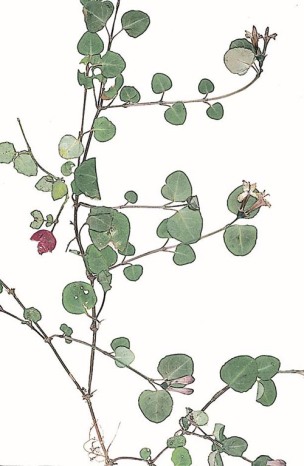“Partridgeberry”
Botanical Name: Mitchella repens
Common name: Partridgeberry (Note: Squaw vine is an early name for this plant, referring to its Native use in treating female reproductive disorders although this name is no longer used; the term ‘squaw’ has been used in a derogatory way and is considered to be insulting by many Native women)
Family: Rubiaceae
Parts Used: Whole plant (leaves and stem)
Active Constituents:
- Alkaloids
- Bitter glycoside
- Dextrin
- Emodin
- Mucilage
- Resin
- Saponins
- Tannin
- Wax (Thomsen and Gennat)
Qualities: Cool, pungent; drying
Actions:
- Uterine tonic (strengthening the uterine and pelvic muscles)
- Antispasmodic (uterus)
- Antihaemorrhagic (uterine)
- Emmenagogue
- Partus preparator
- Post partum tonic
- Galactagogue
- Astringent
- Diuretic
- Wound healing
- Nervous system tonic (Erin Smith)
Indications:
- Any issues with a congested or atonic uterus – e.g. post part haemorrhage or infertility
- Menstrual irregularity, amenorrhoea or tardy menstruation
- Ovary congestion
- Dysmenorrhoea – helps to maintain the proper balance between relaxation and contraction
- Menorrhagia – excessive bleeding caused by uterine atonality with a sensation of fullness, tenderness and pressure in the abdomen
- Dysfunctional Uterine Bleeding (DUB)
- Pregnancy and post partum
- False labour pains in pregnancy
- Can stop uterine cramping during pregnancy
- Painful labour pains
- Can act as a nervine tonic for any anxiety and tension during pregnancy
- Partus preparator
- Miscarriage prevention
- Prolapse
- Leucorrhea
- Urinary System Indications: Urinary tract infections, benign prostatic hyperplasia, interstitial cystitis, bedwetting in children, UTIs in pregnancy, dysuria
- Gastroinstestinal System Indications: diarrhoea, irritable bowel, inflammatory bowel disease, haemorrhoids (as a moderate astringent)
- Specific: Post partum haemorrhage; heavy menstruation or after miscarriage, surgical abrotion or D&C; dysmenorrhoea, pregnancy, catarrhal colitis, facilitation of parturition (BHP)
The indigenous people of North America used Partridgeberry as an emmenagogue, astringent, diuretic, parturient and styptic. Topically, it was used as a wash for sore nipples during breastfeeding.
Eclectics used Partridgeberry for atonic conditions of the female reproductive tract; i.e. tardy menstruation and uneasy sensations in the pelvis with dragging tenderness and pressure; frequent desire to urinate although difficulty evacuating.
Contraindications: First trimester of pregnancy – and other texts warn to avoid use in pregnancy all together until the last 6 weeks
Cautions: None known
May be drying and, therefore, long-term use may be an issue in individuals with drier constitutions. In these cases, pair with a demulcent herb.
Dosage: 20-40ml per week 1:2FE
Combinations:
- Threatened miscarriage – combine with Wild Yam and Black Haw
- To prevent early labour in last trimester – Raspberry Leaf





